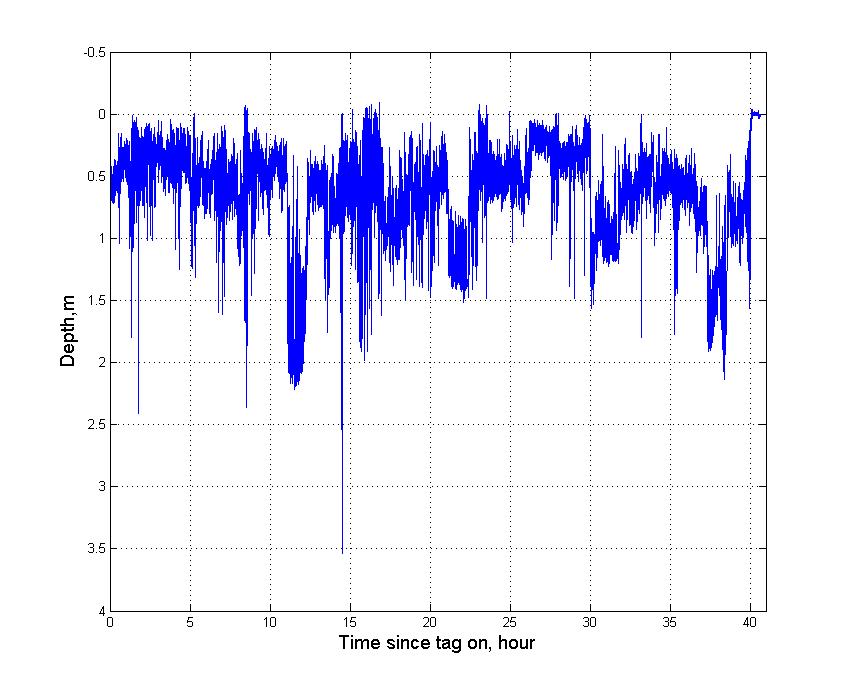The combination of different sensors in DTAGs has helped us to have a better understanding of the target species foraging and diving behaviour. Accelerometer, magnetometer and pressure sensor helps with the understanding of the animal’s dive profile and movements, while hydrophones help to understand the animal’s environment and vocalisation. DTAGs are typically useful for studying whales with long and deep dives as they have been used to understand some aspects of deep diving echolocators’ lives, especially beaked whale. For more information you can watch this video and read this paper by Tyack et al.
The first DTAG was deployed on a right whale in August 1999 in Bay of Fundy, Canada. Since then about 980 DTAG deployments have been done on more than 20 species of marine mammals in different project .
Echolocating and deep-diving species
- Cuvier’s beaked whale (Ziphius cavirostris). Cuvier’s beaked whales can dive to 1888m and as long as 85 minutes. They use echolocation clicks and buzzes to find their prey. This species has been tagged in Alboran Sea, Ligurian Sea and North Pacific (southern California).

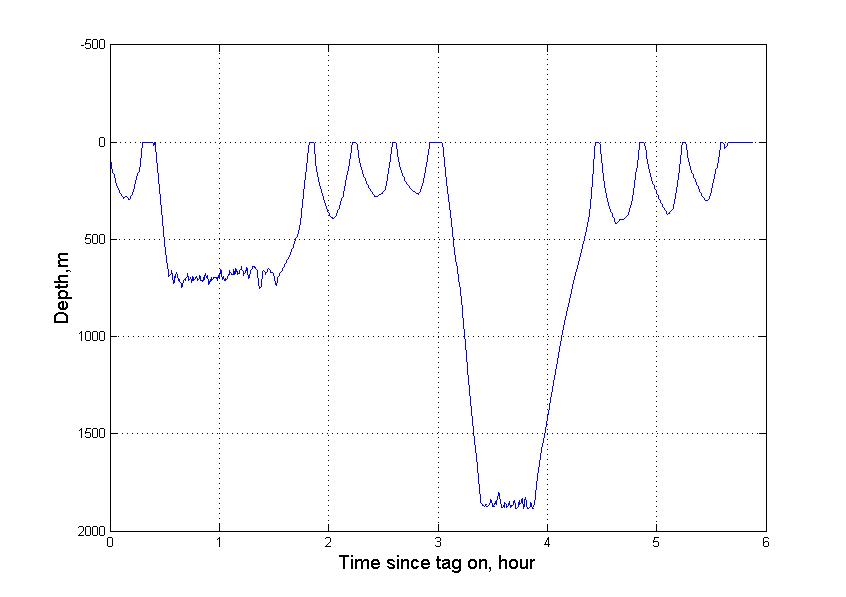
Cuvier’s beaked whale dive profile generated from DTAG metadata. This dive profile belongs to an animal tagged in Liguria, Italy, 2004, by Mark Johnson’s team.
- Blainville’s beaked whale (Mesoplodon densirostris). These beaked whales can dive to 1250m and as long as 57 minutes. Like other beaked whales they use echolocation clicks and buzzes to find their prey. Blainville’s beaked whales have been tagged around El Hierro, Canary Islands and Andros Island, Bahamas.


Blainville’s beaked whale dive profile generated from DTAG metadata. This dive profile belongs to an animal tagged in Bahamas, 2007, by Peter Tyack’s team. Here is the foraging clicks and buzz of a Blainville’s beaked whale recorded by DTAG.
-
Sperm whale (Physeter macrocephalus). Sperm whales are deep divers; they can dive to more than 1000m and for 45 minutes. They use echolocating clicks to forage. They also have distinctive series of 3-12 clicks called codas which are mostly social.
Sperm whales have been tagged around Azores, Delware and Norway as well as in Gulf of Mexico and Mediterranean Sea.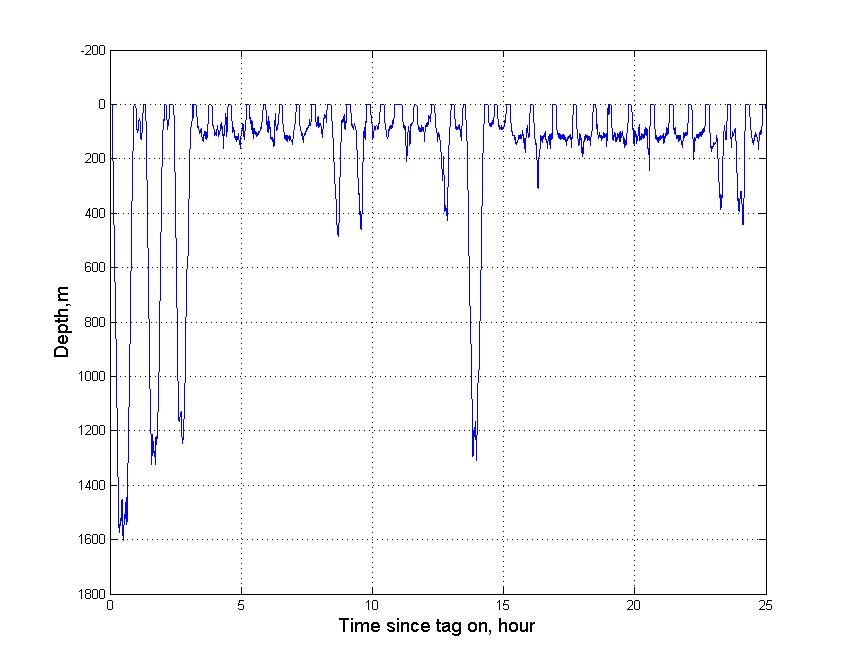
Sperm whale dive profile generated from DTAG metadata. This male sperm whale was tagged in Norway, 2005, by Mark Johnson’s team. It seems that the arctic sperm whales have a different dive pattern and are more interested in deeper waters. See below picture which belongs to a sperm whale tagged in Gulf of Mexico. 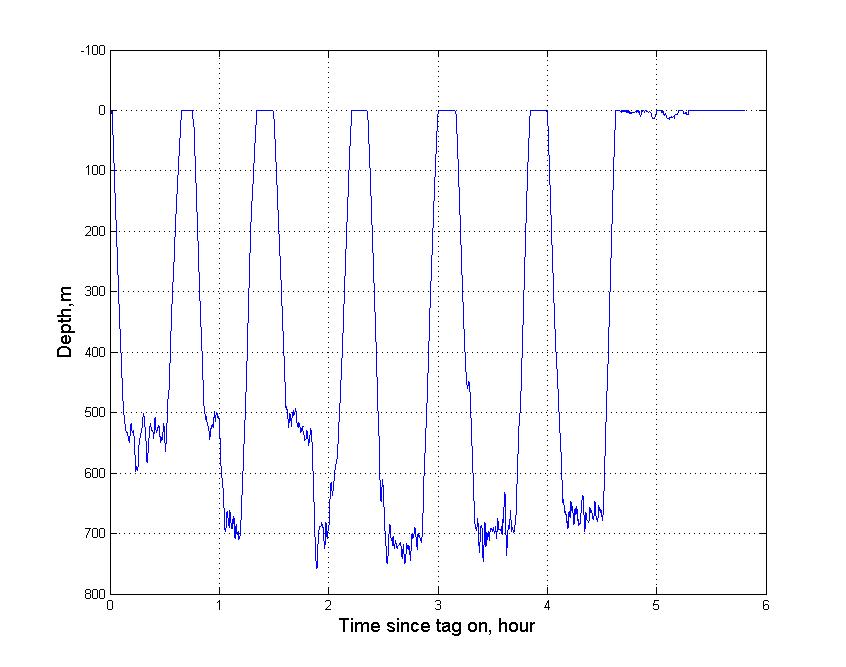
The repeated pattern of sperm whale dives in Gulf of Mexico. Data were collected by Mark Johnson in 2001. You can watch this interesting animation video which was made based on the data obtained from DTAGs.
And here is a sperm whale coda from the Mediterranean Sea recorded by a DTAG.
- Pilot whales (Globicephala melas & G. macrorhynchus). Pilot whales can dive to more than 1000m for more than 20 minutes. For more information read this paper by Aguilar Soto et al.
Pilot whales have been tagged around Hawaii, Norway,Tenerife (Canary Islands), Andros Island (Bahamas), Cape Hatteras (North Carolina), Tarifa (Spain), and in Alboran Sea.
Pilot whale and calf. Photo by Teo Lucas. 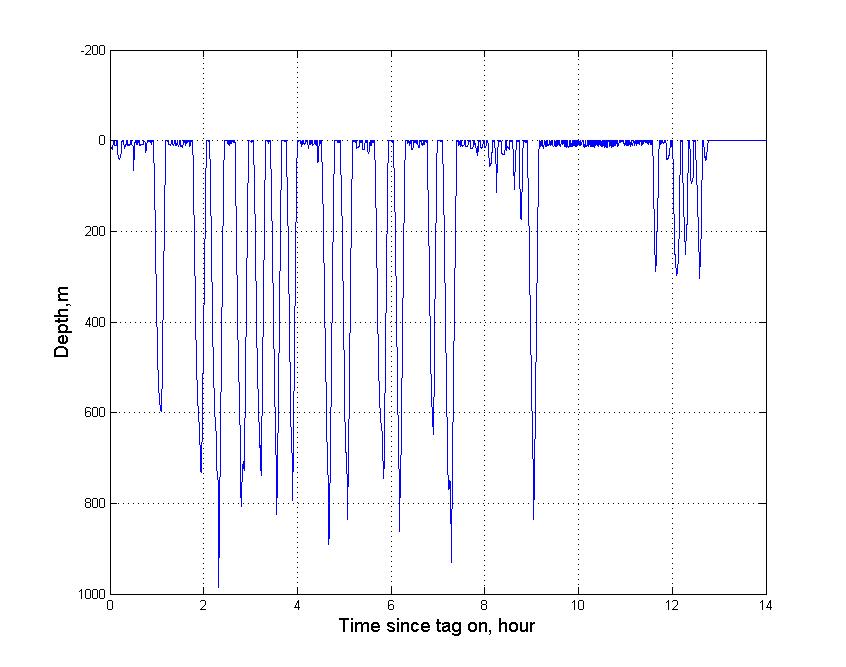
This is dive profile of a short-finned pilot whale tagged by Natacha Aguilar Soto and Mark Johnson in Tenerife (Canary Islands), 2008. This is a pilot whale sound recorded by DTAG. This pilot whale is chasing its prey.
Other toothed whales (echolocators) tagged by DTAG include:
- Northern bottlenose whale (Hyperoodon ampullatus)
- Narwhal (Monodon monoceros)
- Killer whale (Orcas orcinus)
- False killer whale (Pseudorca crassidens)
- Melon-headed whale (Peponocephala electra)
- Harbour porpoise (Phocoena phocoena)
- Bottlenose dolphin (Tursiops truncates)
- Risso’s dolphin (Grampus griseus)
Baleen whales
- Humpback whale (Megaptera novaeangliae). Humpback whales are stunning large whales, known for their acrobatic behaviour, bubble feeding and culturally transmitted songs.
Humpback whales have been tagged around Bay of Fundy and Newfoundland (Canada), Stellwagen Bank (Massachusetts, USA), Mauii (Hawaii, USA), Norwegian Sea, Greenland, Eastern Australia and Antarctic.
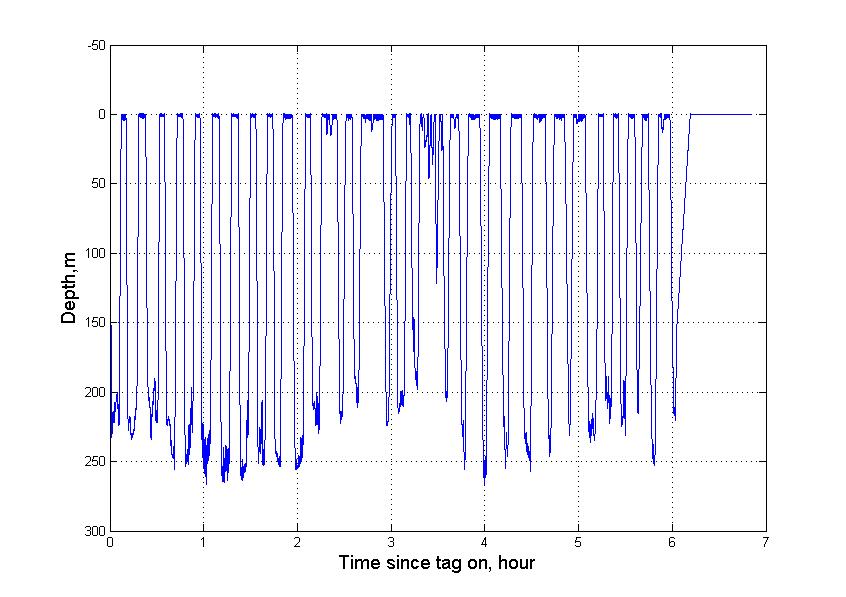
A humpback whale dive profile generated from DTAG data. This whale was tagged by Peter Madsen in Greenland, 2007. And this is a humpback whale vocalisation recorded by DTAG.
- Right whale (Uebalaena glacialis). Right whales have robust bodies, big heads, and a very arched mouth. DTAGS have been put on North Atlantic right whales which are categorised as endangered in IUCN Red List of Threatened Species. The tags have been deployed around Bay of Fundy (Canada) and Stellwagen Bank (Massachusetts, USA).
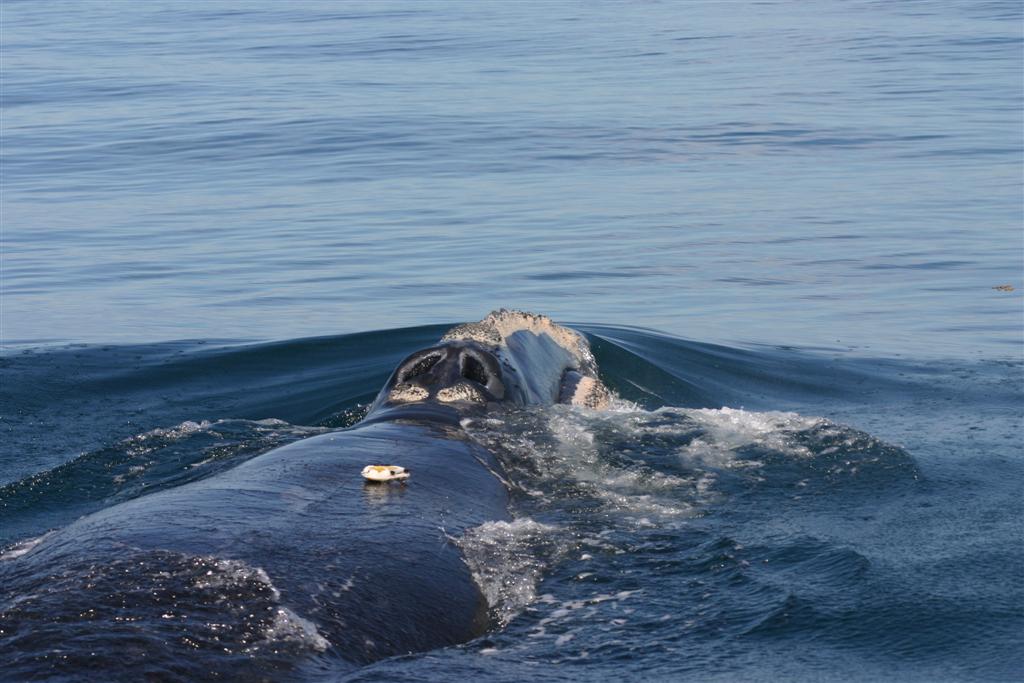
Right whale. Photo by Stacy DeRuiter. 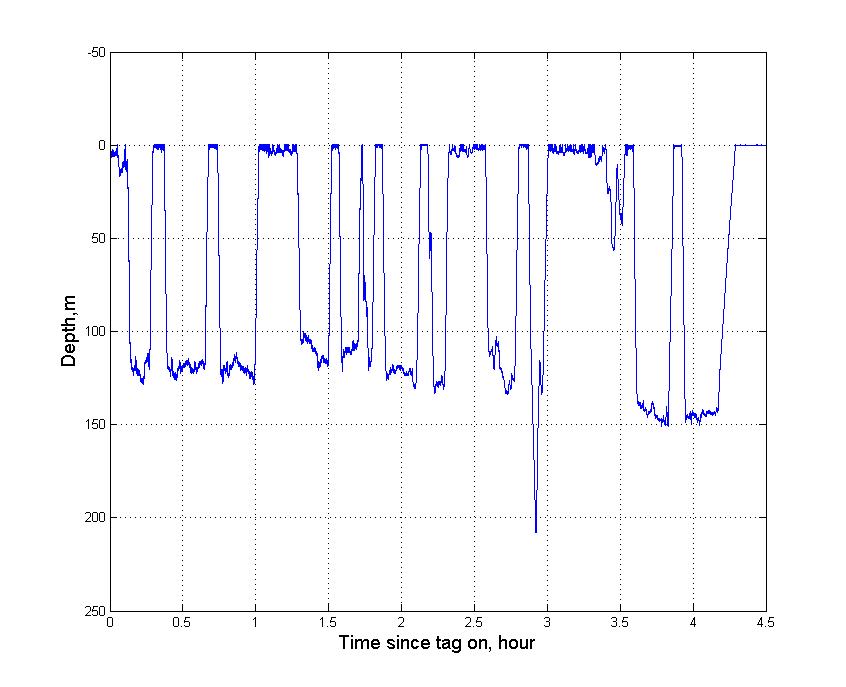
North Atlantic right whale dive profile obtained from DTAG metadata. This whale was tagged in Bay of Fundy, 2002, by Doug Nowacek’s team. - Blue whale (Balaenoptera musculus). The largest animals on the planet, blue whales usually dive for 8-15 minutes. Blue whales have been tagged in Greenland.
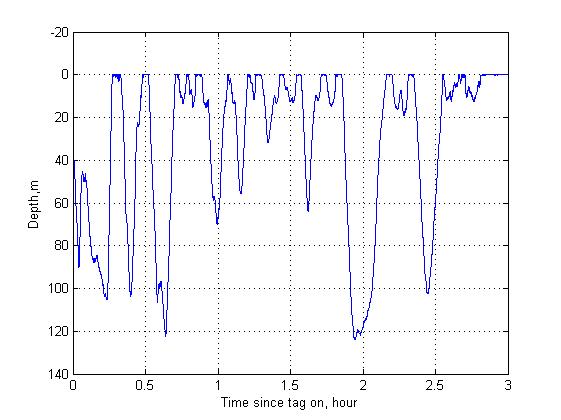
Other toothed whales tagged by DTAg include:
- Bowhead whale (Balaena mysticetus)
- Common minke whale (Balaenoptera acutorostrata)
- Bryde’s whale (Balaenoptera brydei)
- Fin whale (Balaenoptera physalus)
Not just cetaceans have been tagged by DTAGs. They have been deployed on one South American fur seal (Arctocephalus australis) and several “endangered” West Indian manatees (Trichechus manatus). This species of manatee have been tagged around Bleize and Sarasota (Florida, US) by using peduncle straps. You can see a manatee dive profile below.
